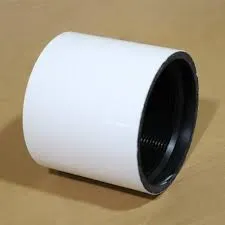- Afrikaans
- Albanian
- Amharic
- Arabic
- Armenian
- Azerbaijani
- Basque
- Belarusian
- Bengali
- Bosnian
- Bulgarian
- Catalan
- Cebuano
- Corsican
- Croatian
- Czech
- Danish
- Dutch
- English
- Esperanto
- Estonian
- Finnish
- French
- Frisian
- Galician
- Georgian
- German
- Greek
- Gujarati
- Haitian Creole
- hausa
- hawaiian
- Hebrew
- Hindi
- Miao
- Hungarian
- Icelandic
- igbo
- Indonesian
- irish
- Italian
- Japanese
- Javanese
- Kannada
- kazakh
- Khmer
- Rwandese
- Korean
- Kurdish
- Kyrgyz
- Lao
- Latin
- Latvian
- Lithuanian
- Luxembourgish
- Macedonian
- Malgashi
- Malay
- Malayalam
- Maltese
- Maori
- Marathi
- Mongolian
- Myanmar
- Nepali
- Norwegian
- Norwegian
- Occitan
- Pashto
- Persian
- Polish
- Portuguese
- Punjabi
- Romanian
- Russian
- Samoan
- Scottish Gaelic
- Serbian
- Sesotho
- Shona
- Sindhi
- Sinhala
- Slovak
- Slovenian
- Somali
- Spanish
- Sundanese
- Swahili
- Swedish
- Tagalog
- Tajik
- Tamil
- Tatar
- Telugu
- Thai
- Turkish
- Turkmen
- Ukrainian
- Urdu
- Uighur
- Uzbek
- Vietnamese
- Welsh
- Bantu
- Yiddish
- Yoruba
- Zulu
vacuum hose coupling
Understanding Vacuum Hose Couplings An Essential Component for Efficient Systems
In various engineering and mechanical systems, efficiency is paramount, particularly where fluid dynamics are involved. One critical component that often plays a vital role in such systems is the vacuum hose coupling. These couplings are specifically designed to connect hoses in vacuum applications, ensuring that air or fluid is transported efficiently without leaks or interruptions. In this article, we delve into the importance, types, and applications of vacuum hose couplings.
What is a Vacuum Hose Coupling?
A vacuum hose coupling is a specialized fitting that connects two sections of vacuum hoses. Its primary function is to create a secure and airtight seal, which allows for the effective transport of gases, vapors, or liquids in a vacuum environment. The integrity of this connection is crucial because any leaks can compromise the performance of the entire system, leading to reduced efficiency and potential equipment failure.
Types of Vacuum Hose Couplings
There are several types of vacuum hose couplings, each designed for specific applications and requirements
1. Barbed Couplings These are among the simplest and most commonly used couplings. They feature a series of ridges or barbs that grip the inside of the hose, creating a tight seal. Barbed couplings are easy to install and are often used in less demanding applications.
vacuum hose coupling

2. Cam and Groove Couplings Also known as cam lock fittings, these provide a quick and secure connection. They consist of a male and female component, where the male component locks into the female part through a cam mechanism. This design allows for quick disconnection and reconnection, making it ideal for applications that require frequently changing hoses.
3. Flanged Couplings These couplings use a flanged design to create a robust connection between hoses. They are often bolted together and are suitable for high-pressure applications. Flanged couplings provide excellent strength and stability, making them a preferred choice in industrial settings.
4. Threaded Couplings In applications where a more permanent connection is desired, threaded couplings are used. These may require special tools for installation and disassembly, but they offer a strong and durable connection that can withstand significant pressure.
Applications of Vacuum Hose Couplings
Vacuum hose couplings find usage across various industries, including automotive, manufacturing, and pharmaceuticals. In the automotive sector, they are instrumental in systems that require vacuum pressure for operation, such as braking systems and emissions control. In manufacturing, these couplings are essential for the transportation of materials in vacuum packaging processes. The pharmaceutical industry relies on vacuum systems to ensure sterile processing, making robust hose couplings critical for maintaining safety and integrity.
Conclusion
In summary, vacuum hose couplings are indispensable components in many systems that rely on the effective movement of fluids under vacuum conditions. With various types available, they cater to a wide range of applications and provide the secure connections necessary to maintain system efficiency. Whether in industrial, automotive, or laboratory settings, understanding and selecting the appropriate vacuum hose coupling is crucial for optimal performance and reliability.
-
Tubing Pup Joints: Essential Components for Oil and Gas OperationsNewsJul.10,2025
-
Pup Joints: Essential Components for Reliable Drilling OperationsNewsJul.10,2025
-
Pipe Couplings: Connecting Your World EfficientlyNewsJul.10,2025
-
Mastering Oilfield Operations with Quality Tubing and CasingNewsJul.10,2025
-
High-Quality Casing Couplings for Every NeedNewsJul.10,2025
-
Boost Your Drilling Efficiency with Premium Crossover Tools & Seating NipplesNewsJul.10,2025







